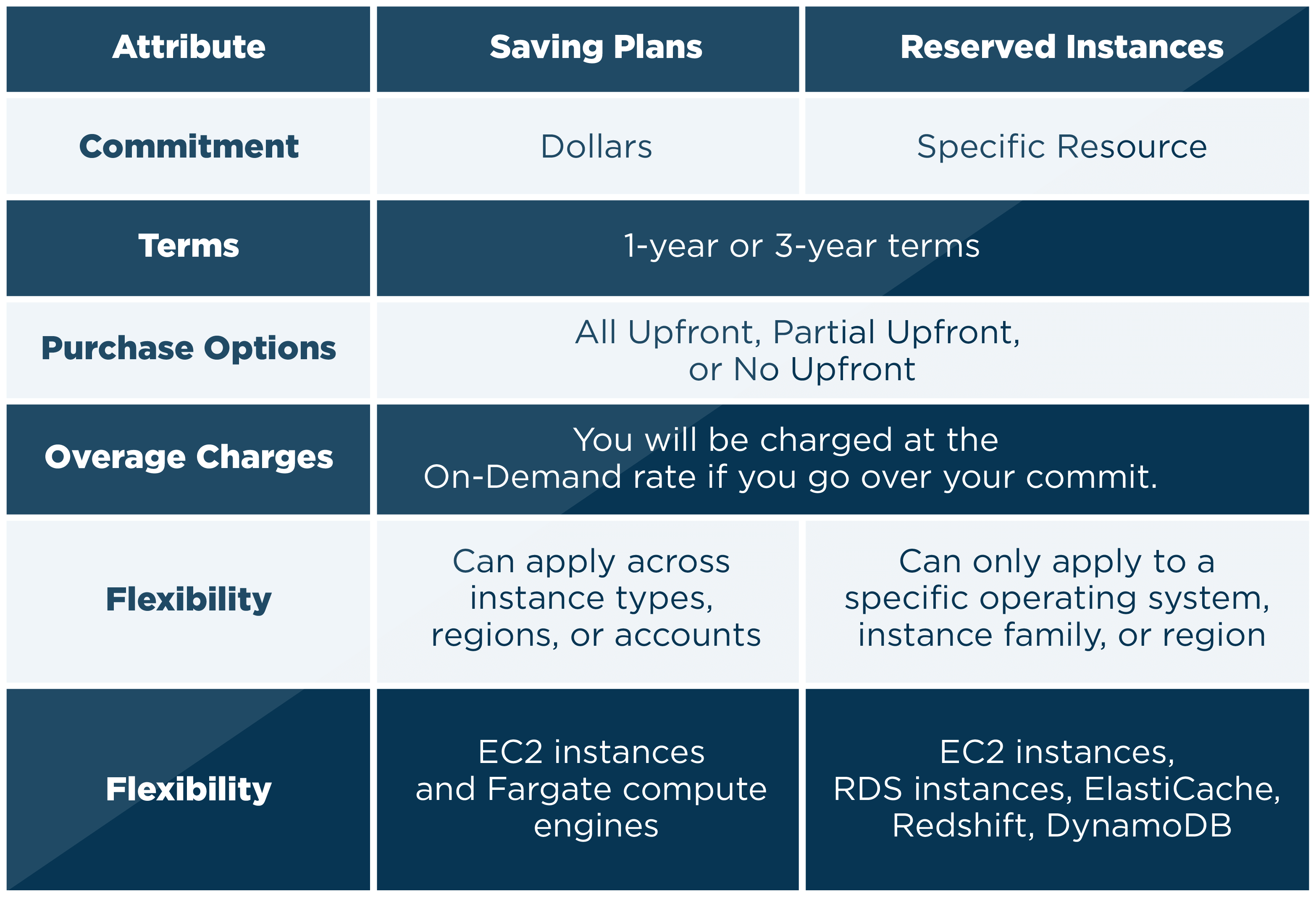Understanding AWS Savings Plans
AWS has done so over sixty times in the decade-plus that it has been around. To their credit, they are always looking for creative ways to make cloud computing more affordable. For most of those years, Reserved Instances (RIs) were the best way to earn a significant discount (often greater than 50%) by making a long-term commitment of one year or three years. AWS also benefits from RIs by knowing what equipment to invest in, and in which region, to pass those savings on to the customer.
What is AWS Savings Plans?
According to Amazon’s website, AWS Savings Plans is a new and flexible discount model that provides you with the same discounts as Reserved Instances, in exchange for a commitment to use a specific amount (measured in dollars per hour) of compute power over a one or three year period.
That said, RI planning can be somewhat complex and prone to inefficiencies. When RI planning is optimized, the savings can be significant—but when done incorrectly, a three year commitment with the wrong configuration of RIs can be an expensive mistake. AWS Savings Plans is designed to help alleviate the hassles of buying RIs. The Savings Plans model allows AWS customers to receive discounts on cloud computing bills in exchange for purchase commitments.
Like RIs, Savings Plans can provide a significant discount compared to using compute resources on-demand, similar to the RI purchasing model. Unlike RIs, however, AWS Savings Plans provide greater flexibility on how these savings can be applied across consolidated bills and reduce the risk of unused commitments due to a changing infrastructure. While Standard RIs can be sold on the AWS RI Marketplace, there is no such option for Savings Plans, so proper planning is essential.
There are two types of AWS Savings Plans, each with subtle differences:
1. EC2 Instance Savings Plan
Save up to 72% by committing to an EC2 instance family and region, but enjoy size flexibility and the ability to change operating systems and even dedicated tenancy, which can be important for licensing and security.
2. Compute Savings Plan
Achieve up to 66% savings, similar to Convertible RIs, with greater flexibility, including instance family, size, region, and O.S., plus support for Fargate, AWS’ managed service for containers. Reserved Instances aren’t available for Fargate, so if you think you will be leveraging containers in the next three years, this may be important.
Instead of having to decide in advance which particular instance family, size, region and operating system to standardize on, AWS Savings Plan customers can purchase computing resources at an hourly rate. As with RIs, the commitment is for one or three years and can be paid in All Upfront, Partial Upfront or No Upfront payments. Organizations can then mix up instance types, sizes, regions, and even operating systems. As long as they are spending the amount specified, they will be getting a significant discount.
In the chart below, we break down the purchasing options and benefits of the Savings Plans versus Reserved Instances.


No comments: